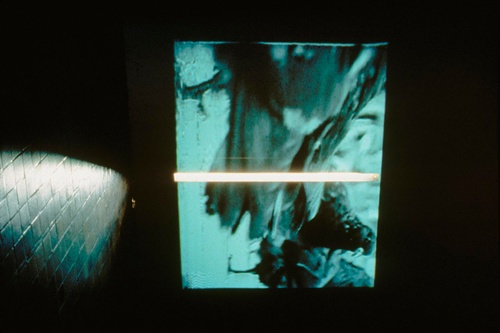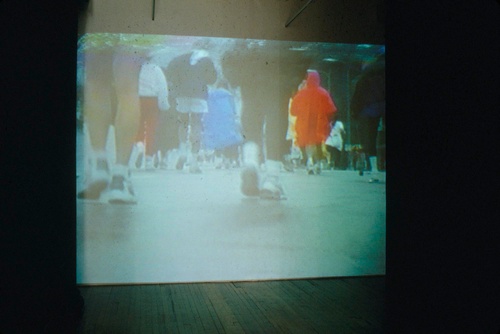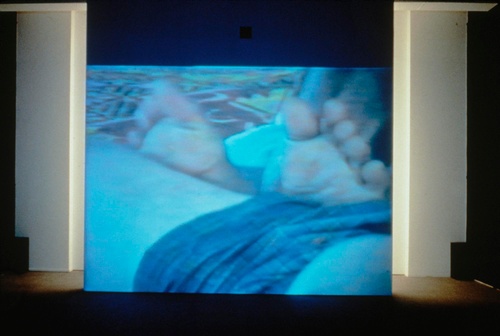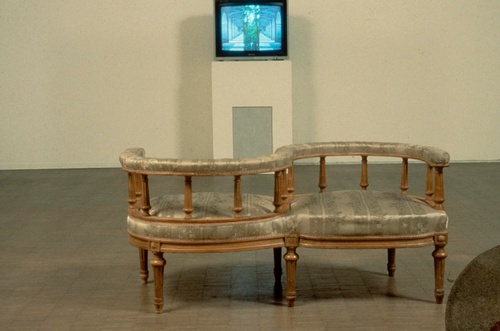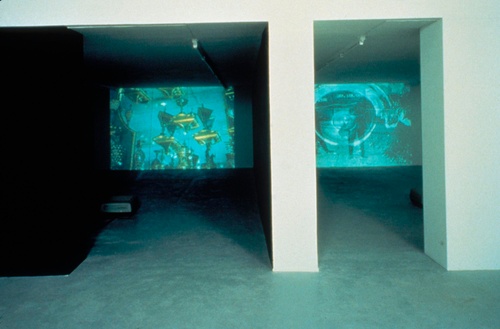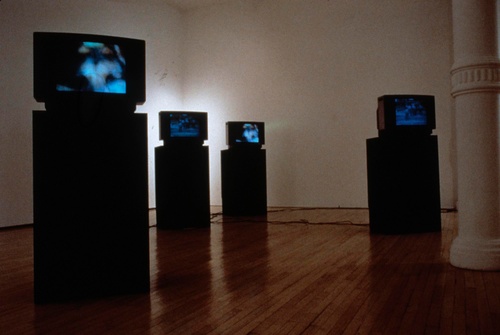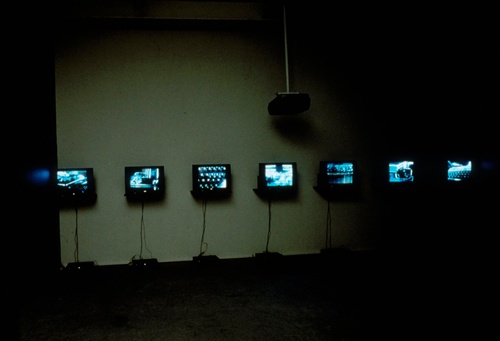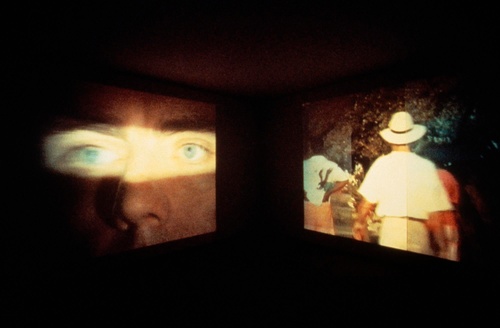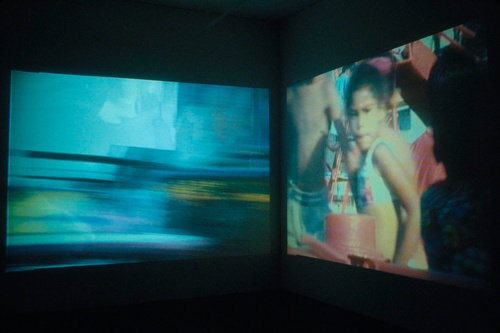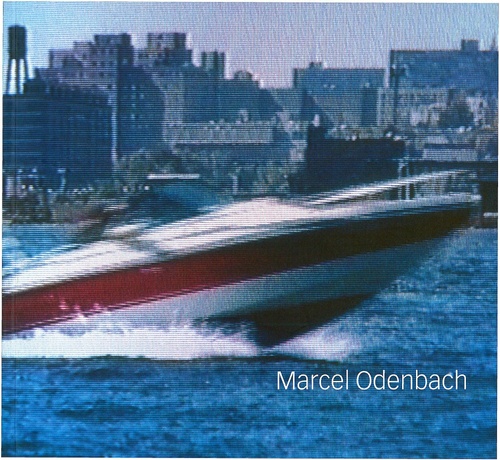Marcel Odenbach
Marcel Odenbach
Video installation has become a standard practice of contemporary art, but it was largely unheard of when Marcel Odenbach produced his earliest video works in the mid-1970s. A quarter century later, the medium has reinvented itself several times, and Odenbach, one of the foremost European pioneers of video art, has remained in the forefront of new developments. At the same time he has maintained a life-long commitment to airing important social and political issues in his work. Using excerpts from classic movies, archival films, and newsreels in his work along with material he has shot himself, Odenbach’s work explores the ways images of the past shape our perception of the present. Like the eruption of a repressed memory, glimpses of some of the century’s most disturbing events punctuate Odenbach’s treatment of current situations and phenomena. The visual ambiguity of what Odenbach himself records, accompanied by suggestive musical soundtracks, creates a sense of fear and anxiety in a work which, on the surface, appears to be free of conflict. On the other hand, Odenbach sets up the installation space and deploys television monitors to subtly disorient the viewer and subvert the notion that we are the ultimate arbiters of what we perceive.
The first piece encountered on entering the exhibition space is the earliest one on view: Niemand ist mehr dort wo er hin wollte (“Nobody is there anymore, where they wanted to be,” 1989-90.) Consisting of a single video monitor set upon a gridlike array of water glasses, the work documents a candlelight procession held in East Berlin just prior to the dismantling of the Berlin Wall in 1989. While the march itself is informal, subdued, and peaceful, its drama is underscored by a Bach fugue which gradually dissolves into the chant “Deutschland einig Vaterland” (“A single German homeland”). Interspersing the procession footage with cutaway shots of Nazi soldiers marching in formation, Odenbach insists on factoring the violent past into an understanding of the drive for German reunification and its implications for Europe. The all-too-human tendency to ignore or downplay history is dramatized in Auf den fahrenden Zug springen (“To Jump on a Moving Train,” 1989-91), video monitors on pedestals arranged in a wedge shape, suggesting a thrusting movement forward. The monitors show images of a train as it makes its way along the Mediterranean coast, entering and leaving tunnels. Each time the train is inside a tunnel, archival historical footage and fragments from the movies of D.W. Griffith and Alfred Hitchcock flash on the screens. The journey ends as the train arrives in a station filled with weary commuters who go about their business, oblivious to the historical baggage which the train, having made its way metaphorically through a tumultuous century, carries in addition to its passengers. Odenbach’s work makes for a prickly subtext to now-fashionable ideologically streamlined views of the present, and his scrutiny is not limited to Germany. His belief that racism is the most pervasive evil of our time has led him to conclude that the ways we experience racial differences are part of history’s unfinished business. In United Colors (1992) – the title borrowed from a well-known clothing maker’s advertising campaign – the architecture of the exhibition space helps create a metaphor for the condition of racial blindness. Approaching a narrow doorway, the viewer sees framed in it the video image of an African tribesman in headdress. Inside the room, however, the African’s distinctive countenance is subsumed by images of mostly Caucasian faces on other monitors. This piece is an ironic comment on how Western marketing campaigns employ the rhetoric of unity to sell to mainly white consumers. In the double-projection work, Mit hat es den Kopf verdreht (“It Turned My Head,” 1994), one screen shows Odenbach’s own eyes looking at the viewer even as they are blinded by a revolving light shining into them. The second image, of South African children at play, contrasts the gaiety of a merry-go-round with a somber context that the viewer tacitly understands as racially-charged. In his more recent work, Odenbach has focused on mass migration as a characteristic phenomenon of our time that we are reluctant to acknowledge. In Von Kommen und vom Gehen (“Coming and Going,” 1995), the artist uses the movements of boats in a harbor to underline the profound differences between people drawn to the water for pleasure and those who, as refugees, must use it to flee. In Da laufen sie (“See How They Run,” 1995), shot at the finish line of the Los Angeles Marathon, exhausted runners are shown in slow motion taking their final steps toward a destination experienced as a kind of dramatic closure. Even in our leisure activities, Odenbach seems to say, we carry the burden of our past; the only way we can shed the past is to never allow ourselves to forget it.



